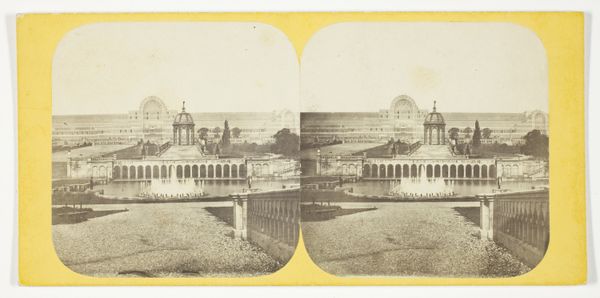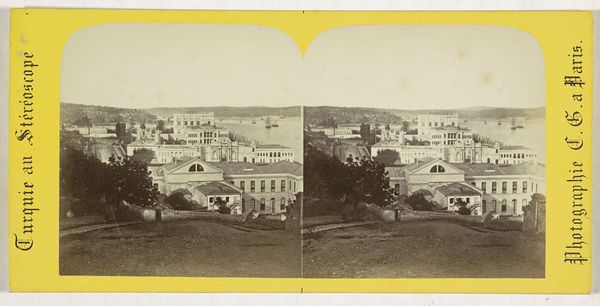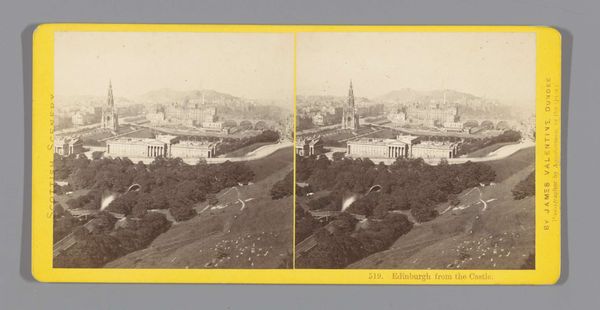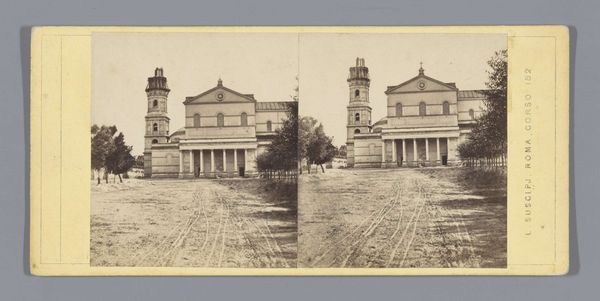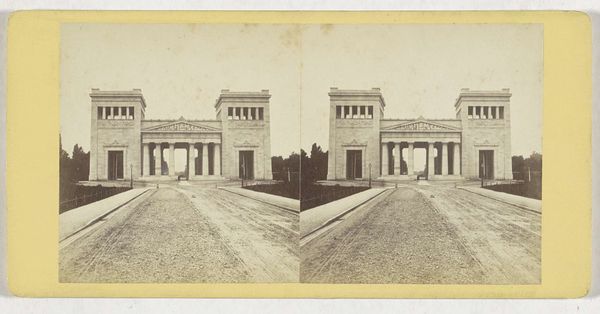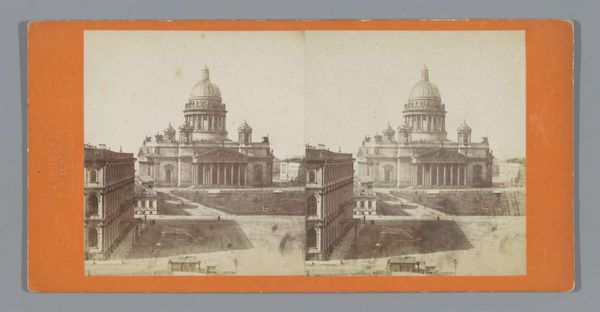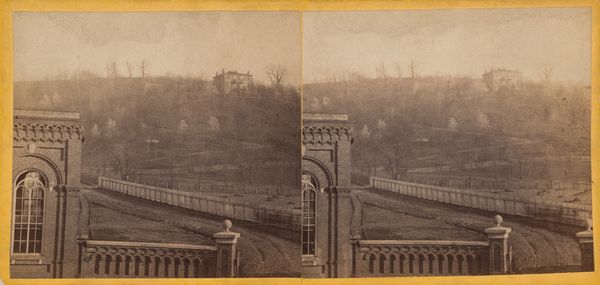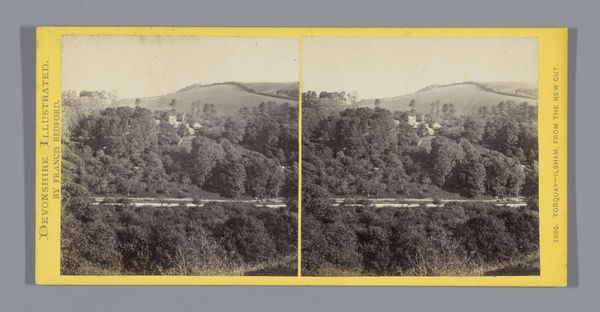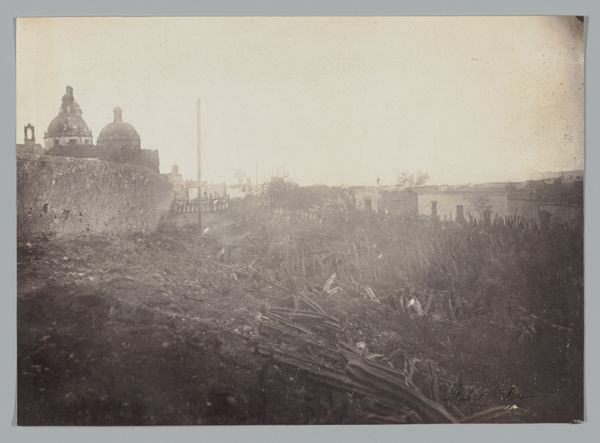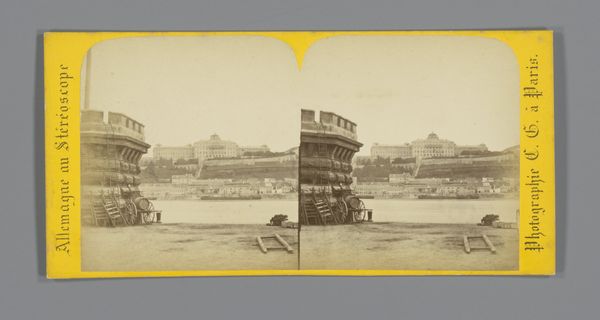
print, photography, albumen-print
# print
#
landscape
#
photography
#
cityscape
#
albumen-print
#
realism
Dimensions: 7.2 × 7.1 cm (each image); 8.4 × 17.5 cm (card)
Copyright: Public Domain
Curator: This albumen print, "Capital at Jefferson City," was taken by Robert Benecke in the late 19th century. What are your first impressions? Editor: It evokes a sense of monumental presence and civic duty. The Jefferson City Capitol looms large against a relatively undeveloped landscape, appearing isolated yet deliberate, as if carving itself out of the existing social space. Curator: Right, consider that it's also a stereoscopic image—it was created for viewing with a special device that makes the image appear three-dimensional. What is that process imparting here? Editor: Ah, then, it isn't just about conveying information but about actively crafting an immersive experience for the viewer, replicating that moment for circulation. The tactile quality inherent in the production process of albumen prints adds an intriguing dimension, since the paper's fibers interact uniquely with light, so how would such images function in their time, both socially and aesthetically? Curator: Precisely. During this period of westward expansion and Reconstruction, this type of image was a form of visual nation-building, depicting symbols of statehood and projecting an image of stability and progress, especially in Missouri with its deeply conflicted role in the Civil War and struggles with equality. It represents the complex issues that the newly reunified United States had to come to terms with and how visual material participates in these dialogues. Editor: Indeed, looking at the physical conditions, the work that has to be done… there is dirt, the infrastructure looks precarious. You get a palpable sense of place, especially regarding building techniques from that time and their embedded economic relationships and modes of social organization. And what about this view? What material perspective does Benecke adopt and frame for our eyes to wander? Curator: It seems deliberately composed to convey a narrative. Benecke’s choice to situate the viewer below the capitol underscores its towering stature and power, both metaphorically and politically, in post-Civil War America. Editor: This invites questions about class dynamics and perspectives. It reminds us that photographs were material objects circulated among certain classes and thus helped reproduce asymmetrical distributions of visibility. Curator: Yes, and understanding that helps us better interpret the scene's symbolism and connect with the history embedded within. Editor: Considering photography's means of production makes these questions even more compelling. Thank you. Curator: Absolutely.
Comments
No comments
Be the first to comment and join the conversation on the ultimate creative platform.
